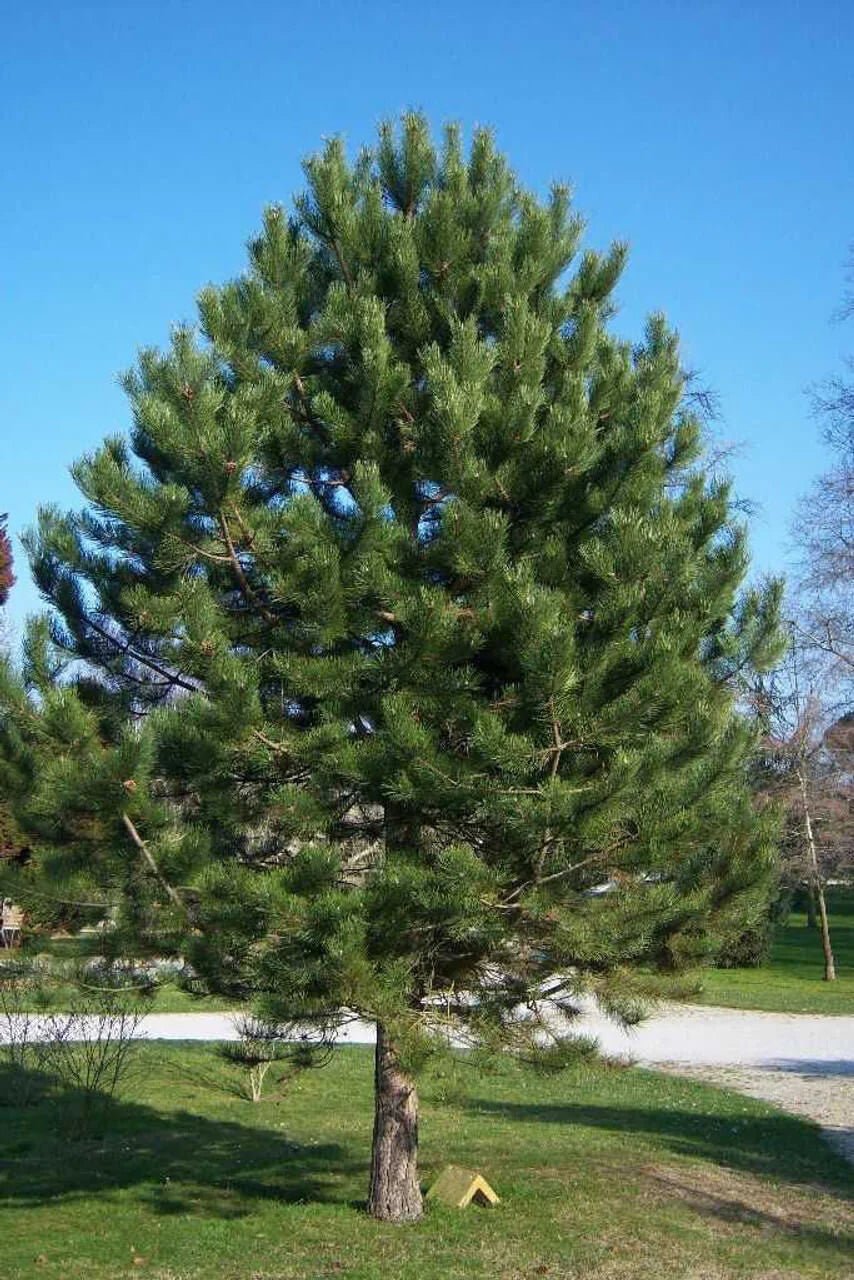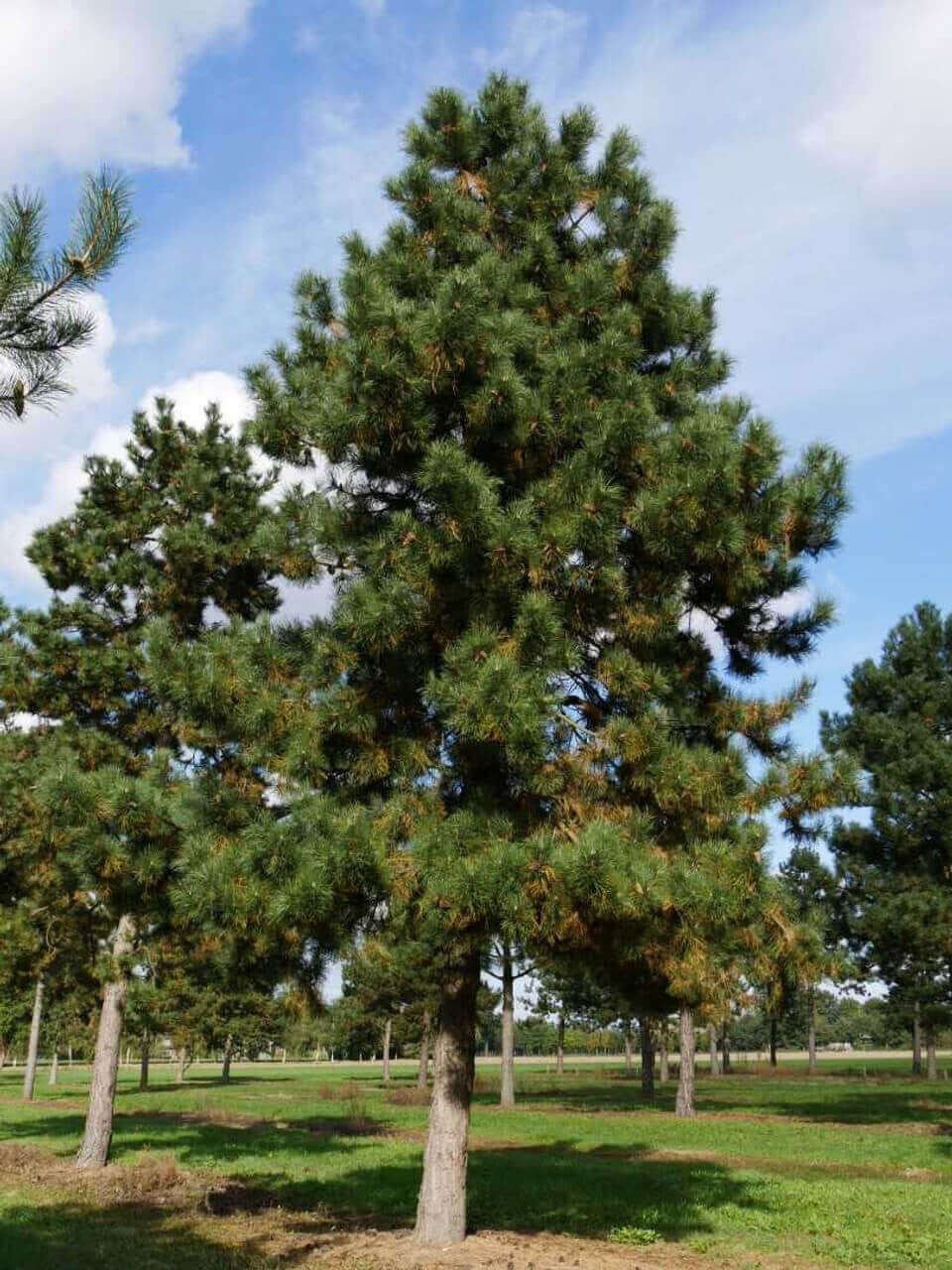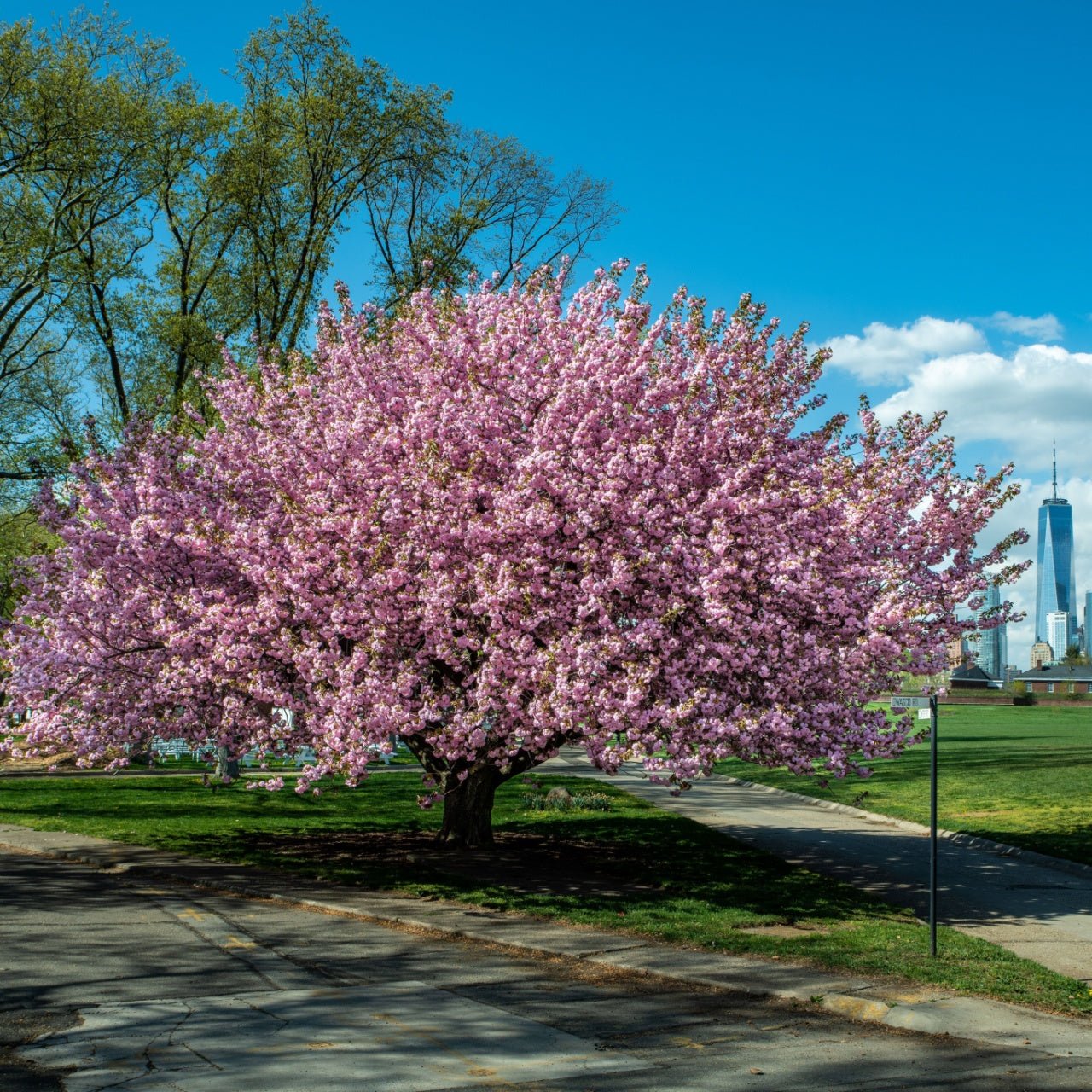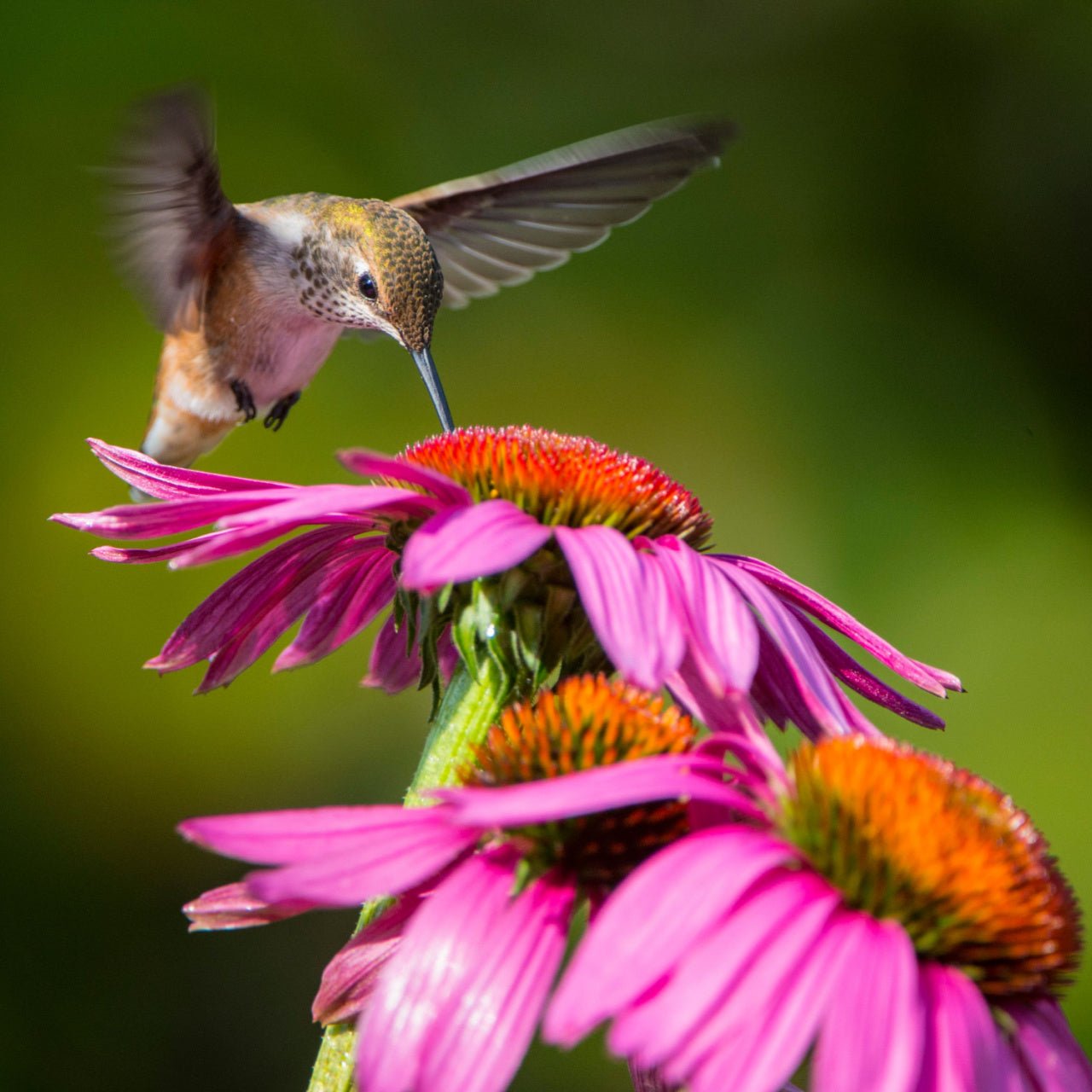



Shortleaf Pine
Attractive year-round evergreen foliage
Low maintenance and drought-resistant
Fast-growing for quick coverage
Thrives in
ZONE 6ZONE 7ZONE 8ZONE 9This plant ships:
Ships November 20251 Year Guarantee on all plants
Shortleaf Pine: Pinus Echinata
Shortleaf Pine is a medium-sized evergreen tree native to the southeastern United States. It is valued for its straight, slender trunk and is an important timber species. It offers significant advantages when integrated into landscaping projects, offering many benefits beyond its potential herbal uses. This native North American tree brings aesthetic and practical value to outdoor spaces, making it a favored choice for various landscaping designs.
They are botanically known as Pinus Echinata. It's native to the southern United States and can be found in 22 states. Gardeners have a variety of names for this tree, including spruce, rosemary, southern yellow, and two-leaf. The tree gets its primary common name from its short leaves ranging from three to five inches. Long-leaf evergreen leaves, by contrast, can reach lengths of up to 18 inches. Gardeners love this tree because of its aesthetically pleasing appearance and ability to draw wildlife.
Identifying Characteristics of the Shortleaf Pine
The tree averages between 80 and 100 feet. However, it's been known to reach heights of up to 130 feet with widths of up to 30 feet. Its bright green leaves are needle-like. It produces short cones that average up to two and a half inches in length. Homeowners prefer this conifer because it remains green all year.
Landscaping With Shortleaf Pine
Due to its height and spread, the Pinus Echinata does well in large yards. Gardeners love it because it adds color in the winter. From February to March, the tree develops yellow blooms. Homeowners can plant this evergreen as a focal point or along the edges of their property for privacy purposes.
What to Plant Around This Evergreen Tree
The tree can be planted around other trees, including the scarlet oak, sourwood, black gum, and sweet gum. Great shrubs around this evergreen tree include the azalea, Oregan grape, creeping junipers, false cypress, and barberry. Great perennials to plant around this tall evergreen include foxglove, asters, bleeding hearts, and catmint. It is known for attracting various birds and bees.
Birds nest in the branches, and bees love the blooming flowers in the early spring. Additionally, this evergreen's branches may provide cover for other small animals. Gardeners and landscapers revere the tree because of its green foliage and ability to provide natural privacy.
What is this tree?
They are a long-stalked conifer with a flat bole, narrow leaves in twos or threes, and fine, pointed cones. It's also typical of them: they're tough, and they like all kinds of soil, including sand. It has little craters of resin embedded in the bark.
How tall do they get?
They are medium trees that range from 50 to 100 feet tall and have a trunk diameter of 1 to 3 feet. In the right growing environment, they can get even taller.
So how long do they live?
They are the eldest types, on average, at 200 to 300 years old in this type. They enrich ecosystems, because they are durable and will return after a burn or disturbance.
Where do they grow best?
These (and all types, for that matter) grow best in well-drained, slightly acidic soils in full sunlight. It requires temperate temperatures (usually obtained at low rainfall rates in arid regions) and most widespread habitats are tropical and subtropical wet broad-tailed forests, uplands and ridges. Spaciness is also very helpful for tree development.
So, what is the good of this tree?
Due to their sturdiness, they are used for construction, paper, and furniture. They're also important habitats for birds and small mammals and are employed for soil conservation and reforestation activities.
This Is How Your Plants Will Look upon Delivery

Height at Maturity
Over 25 Feet
Care
Shortleaf Pine thrives in well-drained soils and needs regular watering, especially during dry periods. Prune young trees to maintain a central leader and remove dead or diseased branches. For optimal growth, fertilize in early spring with a proportional fertilizer.
Plant Reproduction
Shortleaf Pine spreads via seeds dispersed by wind and animals
Plant bare root trees during the dormant season in early spring or late fall (November through April). Dig the hole twice as wide as the roots so the soil is well-drained. Position the tree so the root flare is at or just above ground level. Fill the hole back with the soil you dug from and water. Maintain soil moisture, especially in the tree's early years, by providing deep, regular watering. Apply a 2-4 inch mulch away from the trunk at the base to retain moisture and suppress weeds. Prune trees during the first few seasons to establish strength and resilience, remove damaged branches, and continue maintenance pruning as the tree matures. Regularly inspect for pests and diseases and apply integrated pest management practices. Protect young trees from mechanical damage and extreme temperatures with tree guards, and stake them if necessary for support, removing the stakes after one or two years.
Shipping date depends on the date displayed and chosen when you order from the product's page.
We only accept returns on plants verified dead. If you think your plants have died, we offer a 1 year warranty, please use this File a Claim Link to verify dead plants and start with return warranty process.





.png?v=1722364739917&em-origin=cdn.accentuate.io&em-format=auto)
Versatile Size:
Ideal for both small and large landscapes, its adaptable size fits various garden spaces effortlessly.
Low Maintenance:
Requires minimal care while providing year-round greenery, making it a hassle-free addition to your garden.
Attractive Form:
Features a graceful, symmetrical shape with long, slender needles that add elegance and texture to any landscape.
Resilient Growth:
Handles a range of soil types and weather conditions, ensuring reliable performance in diverse environments.
Caring Tips
How do I care for my Shortleaf Pine?
Each box contains detailed care instructions and information about your product. But here's the basics.
Care Tips
Shortleaf Pine thrives in well-drained soils and needs regular watering, especially during dry periods. Prune young trees to maintain a central leader and remove dead or diseased branches. For optimal growth, fertilize in early spring with a proportional fertilizer.
Light Requirements
Shortleaf Pine thrives in complete sun to partial shade. It prefers at least six hours of natural daylight for optimal growth, but it can tolerate some shade, particularly in warmer climates. Ensure good air circulation around the tree.
Hardy Planting Zones
6 • 7 • 8 • 9
Header
Use this content to share information about your store and products.
Frequently Asked Questions
How often should I water my plants?
How do I know if my plant is getting too much or too little sunlight?
What should I do to prepare my plants for winter?
What are the signs that my plant needs fertilizing?
How can I prevent pests from damaging my plants?
How do I choose the right plant for my climate zone?






